As the Royal Navy mark the centenary of Operation Red Trek, the defence and liberation of Estonia from Bolshevik rule, it is with a measure of professional pride which the UK can rightly reflect upon its continuous commitment to the Baltic region.
This article was submitted to us by Rob Clark (@RobertClark87), a Postgraduate Researcher and British Army veteran.
Solidified with Operation BALTIC PROTECTOR this summer, the UK has underscored its continued presence in this increasingly strategic region.
As part of the nine-member strong Joint Expeditionary Force (JEF), the Royal Navy worked in conjunction with some of its most trusted European partners to ensure British interests are maintained across the Baltic Sea.
Operationally, BALTIC PROTECTOR was about demonstrating credibility as a rapidly deployable military force, whilst signifying British commitment to and freedom of action within the region. Crucially, in the JEFs first operational deployment since its formation in 2018, it was about learning best practice, overcoming and adapting in order to how best take the organisation forward. The operational commander, Royal Navy Commodore Parkin, speaking exclusively to Robert Clark for The British Interest, asserted that this has all been achieved, whilst making “significant leaps forward in developing our interoperability as a military force”.
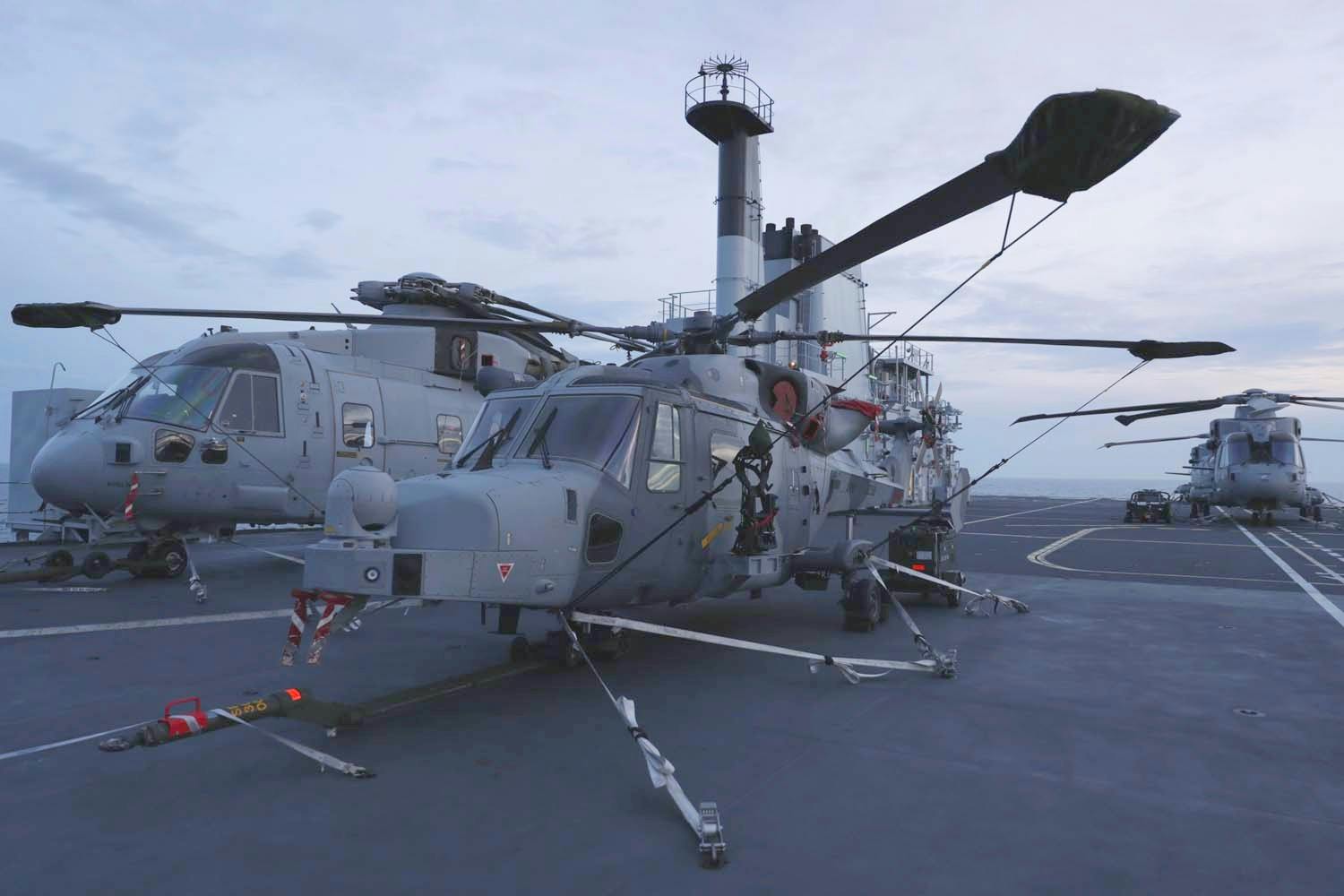
The interoperability throughout the three distinct phases of the operation has been fundamental to how the JEF can and must operate. Without a legally binding treaty, such as NATO, or a common political and bureaucratic architecture, like the EU, the key to the operational success of the JEF has been its ability to work with like-minded nations, all heavily vested in maintaining the rules-based order in northern Europe, particularly in the maritime domain.
The Minister for the Armed Forces, Rt Hon Mark Lancaster MP, explained this perfectly when he summed up the deployment; “From Denmark to Lithuania, from Sweden to Estonia, BALTIC PROTECTOR will leave potential adversaries in no doubt of our collective resolve and ability to defend ourselves. This force is a key component of European security, a force of friends that complements existing structures and demonstrates that we are stronger together”.
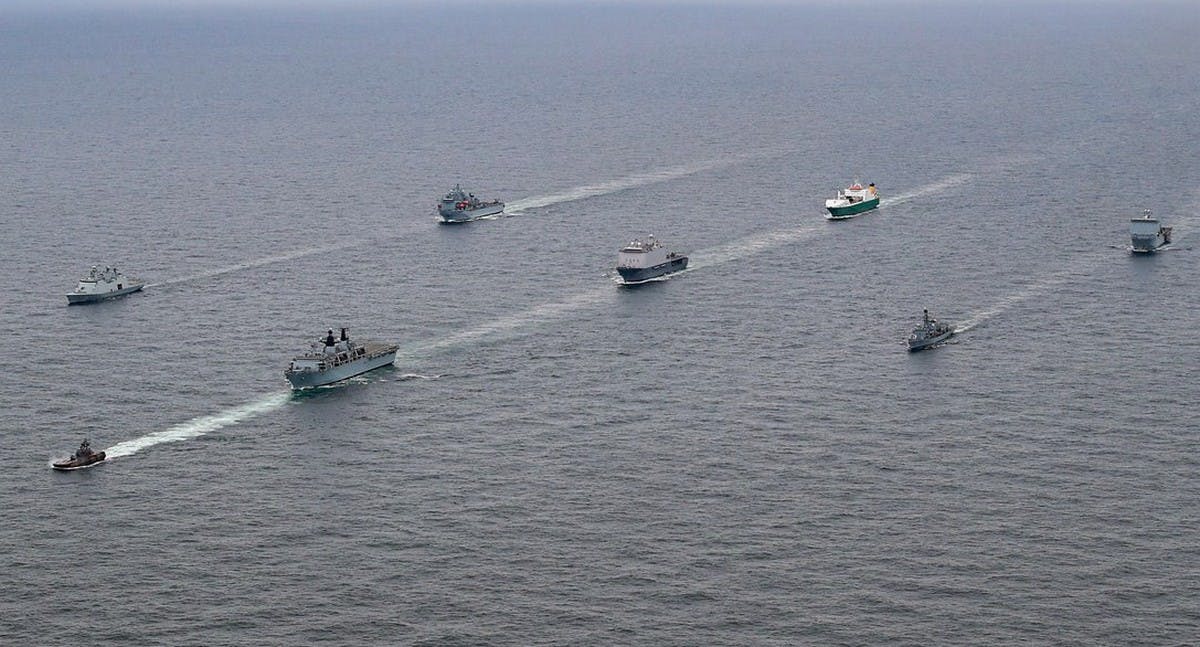
Remaining unshackled from the burden of bureaucracy, Commodore Parkin believes that an additional strength of the JEF is fundamentally found in its relatively small yet inclusive membership; “Having a smaller membership with no binding treaty or collective defence imperative means the JEF is able to think, decide and act quickly”. This ability to think, decide, and act quickly, was highlighted by the freedom of action and mission command afforded at various stages throughout the deployment, whilst all the while working at the interoperability with partner nations.
Some of this partnered work may seem laborious, but is crucial when operating within a multinational task force. Establishing common processes, adapting to a new command structure and understanding one another’s equipment was all part of the integration phase. For instance, the Royal Navy drilled their Royal Marines using every helicopter and landing craft within the force; each nation’s helicopters practised landing on each different deck supported by each ship’s aviation team; and each nation’s landing craft practised embarking and disembarking personnel from each ship. Such work is crucial when operating at a high operational tempo. This afforded the task force the opportunity to utilise other JEF members’ maritime capabilities which are optimised for this region, including the Swedish Visby class corvettes and Norwegian Skjold class fast patrol boats.
This led directly into the final phase, which allowed for the JEF to learn how the it could support the Baltic States during a crisis, and how to work into a larger NATO operation. The task force worked closely with the NATO Baltic Air Policing and enhanced Forward Presence, at one point bringing its collective assets to bear during an amphibious demonstration to senior dignitaries in Estonia.

Commodore Parkin described the success of the deployment as demonstrating that; “the JEF is more than just another security forum – it is also a credible military force. At both the operational and strategic level I think it offers those nations an increased degree of flexibility and variability in how to respond to crises. The JEF can be 2 nations working together to support a humanitarian crisis, or it can be a ‘full fat’ coalition of 9 nations for higher intensity operations”.
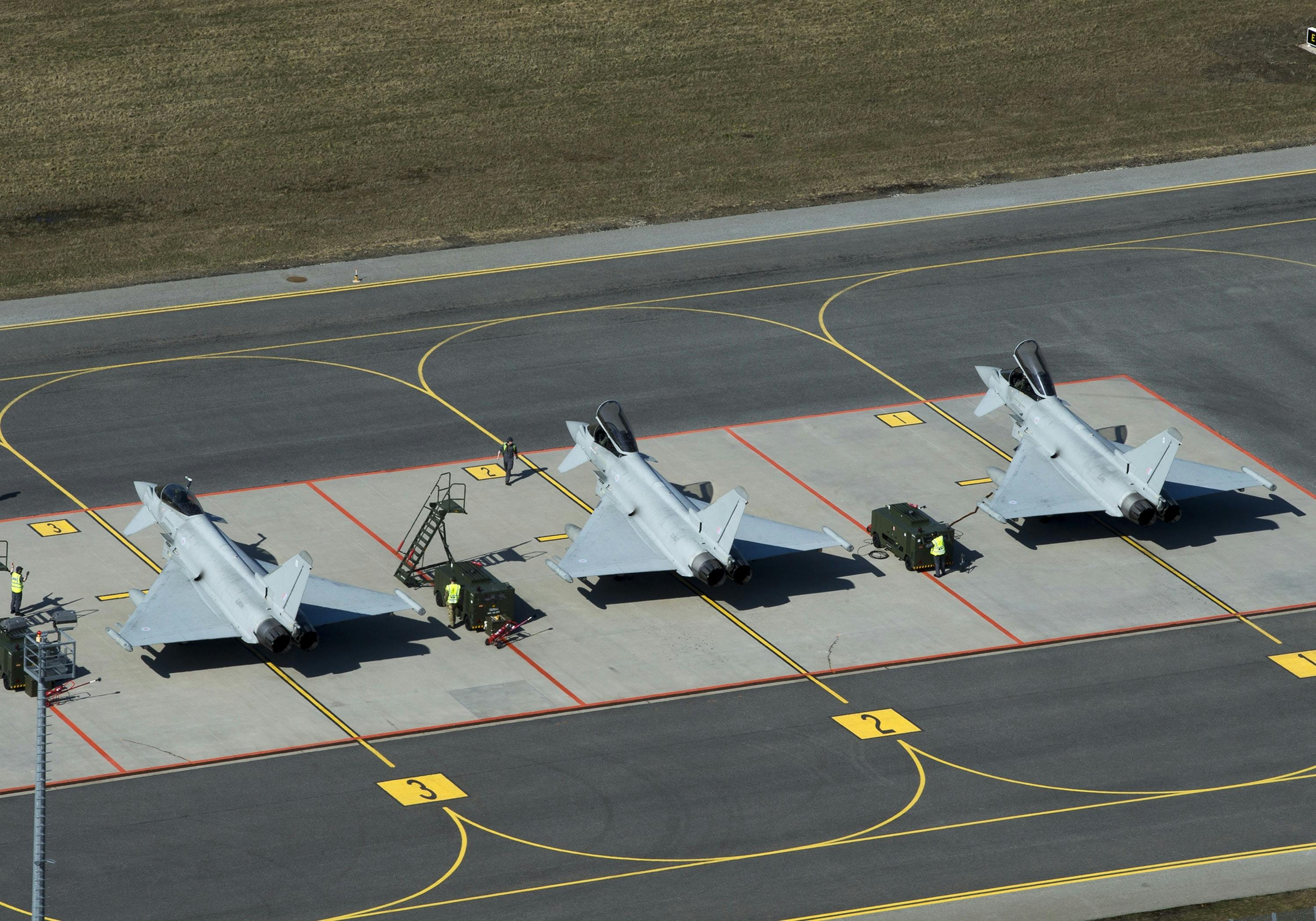
The force, comprising over 10,000 sailors, aircrew and Marines, can stand alone as discussed above, or significantly it can dock into NATO or UN operations, as appropriate. Thus the force provides political choice and flexibility not just to the UK, but to its norther European allies. According to Commodore Parkin, this can also “create doubt in the mind of any potential adversary”.
Whilst acknowledging Russia’s legitimate existence in the region, as demonstrated by the presence of the Russian Federation Naval vessel Fodor Golovin observing the task force, Commodore Parkin correctly points out that “94% of the Baltic Sea coastline that is not Russian belongs to either JEF or NATO nations, so as a JEF Task Group we have that inherent legitimacy that comes with sovereign territory and the freedoms granted on the high seas by the rules-based international system to which we are all signed up”.
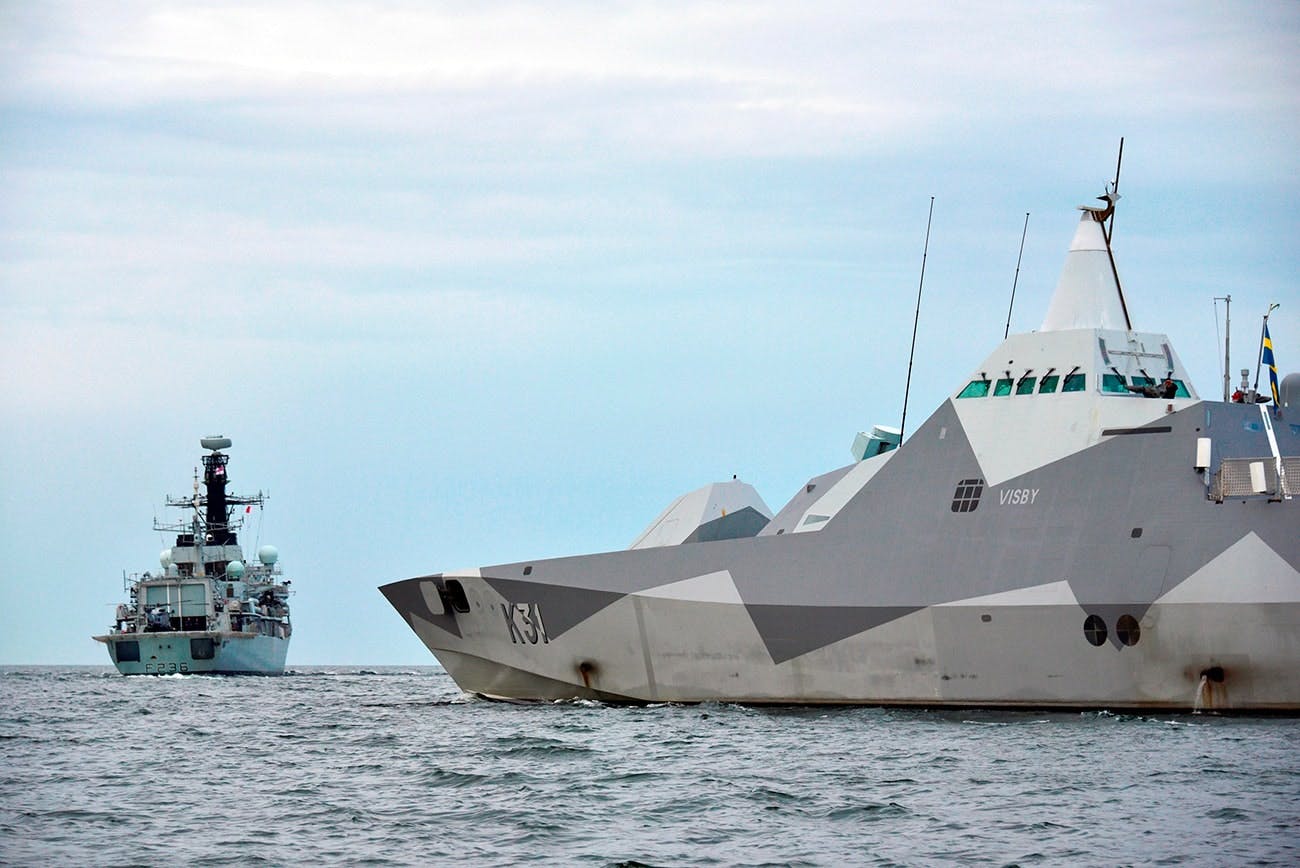
As the Russian actions in eastern Ukraine since 2014, the Black Sea from last year onwards, and its continued subterfuge across the Baltic states demonstrate, threats to states abiding the rules-based international system are prevalent, shaping an era whereby great state rivalry is back. Sustaining the Royal Navy’s ability to confidently and professionally conduct regular deployments with regional partners and allies, and being able to come together in flexible and highly reactive task forces like the JEF, is clearly in the national interest.
Going forwards, Commodore Parkin accurately points out that media reports of ‘low’ troop figures presents a myopic view on the reality of warfare leading into 2020; “For example, a Type 45 destroyer has less than half the number of people of a Type 82 destroyer, but is an order of magnitude more powerful. The RAF would say the same about a two seat Tornado F3 vs a one seat Typhoon FGR4 – half the people but twice the capability. So when newspapers talk about the “shrinking Navy” by looking at headcount, the argument is completely specious”.

As an interesting nod to where capability in the Royal Navy can be developed, however, the Commodore ascertains that the future of naval warfare lies in maintaining the UK’s technological edge; “be that through unmanned/autonomous maritime systems or novel weapons and sensors”.
However, despite the level of automation and machine learning which is set to revolutionise warfare in the coming decade, Commodore Parkin reserves the most fundamental skill at the Royal Navy’s disposal to a much more human element; “I am consistently struck by the quality and commitment of our people across the whole of the Armed Forces, and they will remain our true fighting edge for some time to come”.
For the full interview with Commodore Parkin see this link to The British Interest







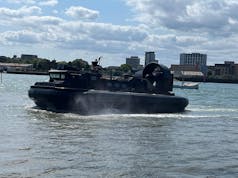



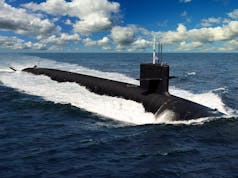

“Going forwards, Commodore Parkin accurately points out that media reports of ‘low’ troop figures presents a myopic view on the reality of warfare leading into 2020; “For example, a Type 45 destroyer has less than half the number of people of a Type 82 destroyer, but is an order of magnitude more powerful. The RAF would say the same about a two seat Tornado F3 vs a one seat Typhoon FGR4 – half the people but twice the capability. So when newspapers talk about the “shrinking Navy” by looking at headcount, the argument is completely specious”.”
To me the argument that mass has a value all of its own is not specious at all.
That applies not just to people, but the aircraft, ships and helicopters they operate.
That we had 11 T42 and a single Type 82 at one time and now only 6 T45 is the reality, no matter how capable the asset is.
That the RN has to cover its commitments using LSD’s in the Carribean, LPD’s in the Gulf, RFA’s in the Indian Ocean, and 1 billion T45’s for a task a T31 with a helicopter and RIB’s with RM’s could do is not at all Myopic.
Yeah we’ve lost far too many assets in recent years and I hate how most millitary top brass keep playing it down probably because they have to! We need more soldiers/Sailors and equipment, granted we do have bigger but fewer assets, but even a type 45 only has 48 missiles and most have no Anti ship missiles!. On another note I wonder if Argus will get a replacement? She was handy carrying choppers for HMS Albion and a bay class that have no hangars, what would they have done for choppers without her large hangar.
The armed forces need to be more outspoken not only for the good of it’s servicemen and women, but for the good of the country. They for too long stand silently whilst the numbers keep going down the top brass, have in this way for all intentions failed in their duty.
The BMT Elida looks an interesting concept purchasing 2 could result in being able to have 2 ARGs with 1 deployed (why did we sell a bay class) . But I doubt this will happen. The only way a Uk ARG looks capable of operating is when deployed with the Carrier Strike Group.
I agree I think the oil tanker situation in Iran has exposed us , more numbers are needed.
Without wishing to put my foot in it the regard to any future incident over Iran, I’m not sure the Gulf example fully supports the contention. (So far?) the Iranians have only managed to pounce on an empty, local ‘British registered’ trader the coastal schedule of which would have been well known to them: overall, small fry. In the meantime, the RN has to date escorted at least 60 vessels on international transits through Hormuz, and ongoing. They have not in any wise been left alone during this time having dealt with unrelenting Iranian challenges albeit primarily confined to hailing of late (wise choice?). Separately, the RN has casually demonstrated that it can quickly up-arm it’s escorts against FIAC; whilst we have additional shore and air assets nearby which ought be on a fairly advanced level of alert.
Apart from the Yanks, nobody else seems capable of that degree of flexiblity at present, whether military or political.
Regards
Correct
12 T42 a single Type 82! If you want to be even more specific, in 1982 there were 9 T42 in commission or working up, the single T82 and 3 County Class destroyers, with a further County Class laid up pending conversion to a training ship.
I think the current situation in the Gulf, coupled with the need to sustain current commitments, provide escorts for the carriers and deploy assets further afield has demonstrated that more ships are needed. T31 or more Rivers is the answer to that, but I have long said that 12 T31 would fully replace the T23 hulls and batch 3 T22’s.
It is imperative to remember that one hull cannot be in more places than one. That was shown in the Gulf, when the powers that be expected one frigate to do exactly that, even though it was very clear Iran would retaliate. The RN have done a superb job in the Gulf and there are a good number of assets now committed. Whether that will be sustained is another question, but what is apparent is the need for numbers.
Yes, our current platforms are more capable than their predecessors, but that’s always the way – it’s progress. But in letting the fleet draw down as much as it has, we’re leaving ourselves open in a considerable number of ways. It’s very similar to the smaller number of airframes that are being procured. One example of this is our ever dwindling helicopter numbers, even though every conflict we have been involved in during the last ~50 years has demonstrated how useful helicopters are. Sure, we don’t need as many as we had, but we could certainly do with more than we have.
I disagree with this logic of “it’s better quality so we need half the numbers”. By that logic, in a few years time, we’ll only have 3 destroyers to replace the T45 hulls as one will be “more capable then all 6 combined!”
Shock! I missed a T42 Lusty. Thought there were 11 most of the modern era? What happened to the 12th?
14 were planned for the RN, but as I think we all know, 2 were lost in the Falklands. The 12 remaining ships remained in service, with the first, HMS Birmingham, being decommissioned in 1999.
HMS Bristol herself remained in frontline service or as a training facility until 1991, when she was converted into her current status as a training ship, replacing the County Class destroyer HMS Kent at Whale Island. By her conversion in 1991, all Type 42 ships were in active service, with the last three hulls being commissioned in 1985. For a few years at least, there was 12 T42 and one T82!
Thank you.
Welcome, always a pleasure.
I was on HMS Bristol as a youngster and regularly worked within sight of it ‘s Whale Island berth until retirement a few years back. I’m now beginning to wonder which of us is going ‘to peg’ it first.
Hopefully neither of you!
Bristol is a fine ship and she would make an excellent Falklands War museum. Some claim the lack of armament counts against this, but the team in Belfast managing HMS Caroline have achieved great things – all of her ‘armaments’ are fakes, convincingly reproduced by a local manufacturer. Similarly, the old training rooms on Caroline are used to host events, display information about the ship and the main one is used as a viewing area for a short film about the Battle of Jutland. Recommend a visit if anyone’s in Belfast.
Yes regarding asset (ships, planes etc) numbers but wasn’t Parkin, at least from the bit of the quote you included Daniele, talking specifically about headcount? On that basis I can see what he is saying and in principle I agree with it.
If one took a hypothetical fleet of 10 (to make arithmentic easier) T82 in the past with a crew complement of 397 each (call it 400) = 4,000 personnel. Now image a current fleet of (we wish!) 15 T45 which, with a crew complement of 191 each (call it 200), needs 3,000 personnel (just looking at crew counts of course) which represents a 25% reduction in personnel but a 50% uplift in ship numbers. I think that was the specific point he was making.
One important caveat to my agreement with his point however is that one must be careful not to let his counter-argument be used inappropriately. If for instance personnel numbers are cut so far that there are insufficient people to adequately crew and maintain even the less-personnel-intensive modern fleet then that is definitely an issue and one that, as I understand it, we are in at the moment although maybe lower crew requirements for T26 and T31 will help dig us out of that hole somewhat. It’s not clear to me however that the lower crew complements of upcoming classes helps much with engineering/technical shortages for shore-based positions.
On ship numbers I do agree with you. 1 ship can’t be in 2 places so mass does have a value all of its own. I also agree that the “we can have fewer of X than we used to because each of our new units is twice (or whatever) as capable than the old ones they are replacing” is specious. There is a constant ongoing cold war where new assets need to be more capable than the assets they are replacing. That’s just called keeping pace with the technological improvement being made by potential adversaries rather us getting ahead. Obviously we strive for and in some cares succeed in gaining technological advantage but it is a constant game of leapfrog and assets have long lives so one can’t be complacent about potentially temporary leads when they arise.
The other specious argument, somewhat related to the above, is claiming an expanding Navy based on tonnage. As well as the 1 ship in 2 places problem tonnage is also a terrible metric for capability. Tesco could probably go out and buy a load of clapped out oil tankers each armed by a few blokes with shotguns and claim a bigger navy than the RN if tonnage were the only metric used.
The way I read his piece was that he was specifically talking about headcount to deflect negative reports on cuts by talking of papers reporting “shrinking fleets” as if they meant personnel.
Any articles I have read on cuts, especially for the RAF and RN, deal mainly with the size of the fleet and numbers of aircraft.
His point on ships having less people to operate is valid.
All obvious bluff,I’m afraid .
It seems odd to me that the royal marines have not invested in something that gives more of a punch to support the vikings.
Both 3 Commando and 16 AA have been woefully supported by mobile fire support over the years.
A squadron of the Household Cavalry Regiment was earmarked to support 16AA at one time. I don’t recall any such arrangement for the RM.
Also the RM are moving away from deploying as a whole brigade to a raiding force.
Maybe also, seeming as for many years the RM had left the vehicles in the hands of the army there was no priority for it, let alone money.
I suspect it probably is money, as I would think a raiding force would need some basic medium/heavy weapons platforms even more so than their traditional role which would be supported by the army. Even if it is just a larger mortar platform incorporated into a raiding vehicle.
Spot on again mate, 16 Bde is a paper tiger, limited OS, with 12 105mm, 81mm and FSG/support Company with GMG, 0.5 and GPMG mounted on Jackel. Used to have HCR troop, with Scimitar and 30mm, old but effective. Now now they are popping over on ex again using jackel! The Royals do have the Viking, but exactly same weapon systems, just a different vehicle to carry them.
I can see however, in the near future, both Brigades being almagated and then having a specialty of one Airborne/one Commando/one air assault Battle group, with a fourth formation, from the Royals as a “raiding” type formation, Commando Battalion strength, (as you have suggested already mate) That way it still seems effective and “dynamic” yet still reduces numbers slightly and therefore saving money, and manpower on not duplicating the C&C, logistics, sigs etc.
Politically it would be sold as a new formation, militarily if done correctly, it could work. However If the RM and Navy had the largest chunk, it would be easier to push through and, given the paper tiger state of 16, I have to admit not being totally against the idea! I would rather have a better equipped “multi capability Brigade” able to deploy effectively and for longer, than a few un-supported light role Battalions, no matter how bloody good they are!
Still, many of my ex colleagues, and er, current ex I’m working with would disagree, so shhhhhhhhhh! Don’t say I said this! ?
Morning Airborne. I really do not see why if the will was there this situation could not be reversed.
I have heard of this amalgamation talk and I believe it is being strongly resisted by the Corps and by the Parachute Regiment.
Looking at 16AA, there are – and any corrections to this please mate?
Headquarters 16th Air Assault Brigade.
– G1 to G9
– ? Sec IC
216 ( Para ) Signals Squadron RS.
2nd Battalion Parachute Regiment.
– Battalion HQ.
– HQ Company.
– A ( Command ) Company.
– B Company.
– C ( Bruneval ) Company
– D Company. ( ISTAR )
– X ? Fire Support Company
3rd Battalion Parachute Regiment.
– Battalion HQ.
– HQ Company.
– A Company.
– B Company.
– C Company
– D Company. ( ISTAR )
– Fire Support Company.
2nd Battalion The Royal Gurkha Rifles.
– Battalion HQ.
– HQ Company.
– A Company.
– B Company.
– C Company.
– Fire Support Company.
7 Parachute Regiment R H A.
– Regimental HQ.
– I Parachute HQ Battery. ( Bulls Troop )
– F ( Sphinx ) Parachute Battery. ( Gun )( 6 )
– G Parachute Battery. ( Mercers Troop ) ( Gun )( 6 )
– R E M E WK Sp.
13 Air Assault Support Regiment R L C.
– Regimental HQ.
– 24 HQ & Spt Squadron.
– 65 Air Assault Support Squadron.
– 63 AA Close Support Squadron.
– 82 AA Close Support Squadron.
– 8 Field Company. ( Parachute )
– R E M E WK Sp.
16 Medical Regiment R A M C.
– Regimental HQ.
– 19 Air Manouvre Medical Squadron.
– 23 Air Manouvre Medical Squadron.
– 81 Air Assault Medical Support Squadron.
– Medical Support Wing. ( Supports UKSF training )
23 Parachute Engineer Regiment RE.
– Regimental HQ. B ( Air Assault )
– 12 HQ & Support Squadron.
– 9 Parachute Squadron.
– 51 Parachute Squadron.
– R E M E Wk Sp.
156 Provost Company R M P
Pathfinder Platoon.
Non integral to the Brigade are –
12 ( Minden ) Air Assault Battery with LML Starstreak, part of 12 RA.
821 EOD Squadron, supports both 16 and 3 Cdo, part of 33 RE.
Looking at the ORBAT, it is welcome that a 3rd Battalion was added in the form of 2 RGR to replace 1 PARA, so the brigade does have 3 manouvere formations. However, it lacks a 3rd Gun battery in 7 RHA, a third Medical Squadron in 16 MR, a 3rd Close Support Squadron in 13 ASSR, and had its integral AAC complement in 3 and 4 AAC removed some years ago, returned to JHC, although 4 AAC is earmarked to support both 16AA and 3 Cdo.
It is also notable that it still retains its Brigade Signal Squadron in 216, the other brigades having lost theirs in the endless cuts.
So it cannot deploy as a whole formation with a full set of enablers for each Battalion.
I don’t think anyone is expecting it to deploy by air, we no longer have the aircraft and only 1 Battalion plus enablers forms the lead AATF, but it should have the enablers to take to the field as a ground formation if necessary, like it did in Helmand, without robbing other units, if the will was there.
As an example, there are 3 “orphaned” Regiments of the RAC right now operating Jackal, part of 1 Division, with no definite role it seems.
What is stopping CFA adding a regiment of these to 16AA on a full time basis as the brigades integral rec formation, and arming it to the teeth with ATGW, 120mm, new vehicles if necessary, and so on?
I did not post up the 3 Cdo ORBAT as this post is already long and this lot you are most familiar with.
Cheers mate.
Daniele you have your shit squared away! Spot on, all accounted for. But as you have observed, their will never be 3 deployable formations, and even on LAATF it is always a company level drop, after the PF, to secure an LZ, to get the remaining Battalion in by air landing. A full Brigade drop is planned for but not envisiged, for numerous reasons, tactical reasons and logistic reasons, ie not enough airframes.’
Anyway, we know that, but as to say, we should be able to deploy as a formation, but we can’t. And as recent history has shown no Brigade in the army could ever deploy with its own assets, all have to take from peter to pay Paul. As for kit, aside from getting 120mm mortar and 155mm (although logistical reasons can be argued against) the Brigade needs a troop or more of Exactor MK2/4, for precision strike at a decent distance. That would be a bit of a game changer, add them as a fourth Bty to 7RHA, job done. And increase Javelin numbers in the rifle Companies, with, as you say, full time formation recce from the RAC! But then my shopping list for the Brigade gets bigger and therefore unrealistic in this current environment mate ? Cheers!
Thanks. Never mind bigger shopping lists, CGS, CFA, whoever, needs to get his act together. I refuse to believe individual batteries cannot be found for Exactor and some of the relatively minor improvements you suggest cannot happen.
I myself am with your colleagues, I’m for keeping both apart, I’m too traditional I guess.
Cheers.
We must consider, that although advanced naval platforms punch further above their weight, they are still individual platforms that can’t be everywhere at once, neither can they be speedily replaced like liberty ships.
I never get the argument of fewer; better-armed vessels, delivering reciprocity with a smaller fleet, especially with the present imbalance of advanced anti-ship missiles.